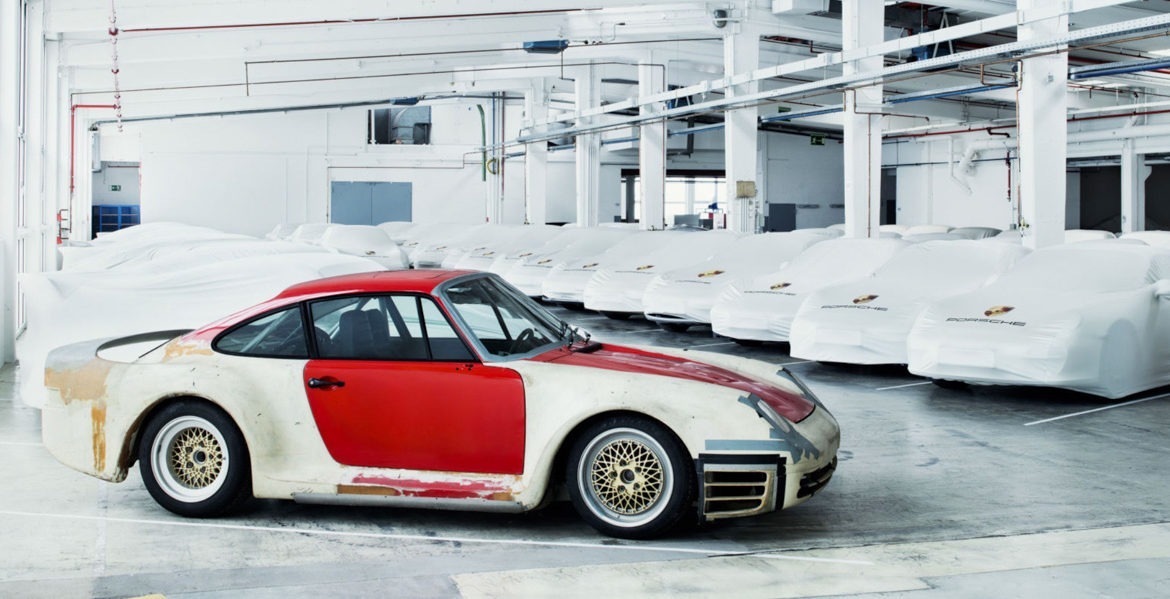
Road and Track- The Secret Story of the Six 959’s Porsche built for one man from Spare Parts
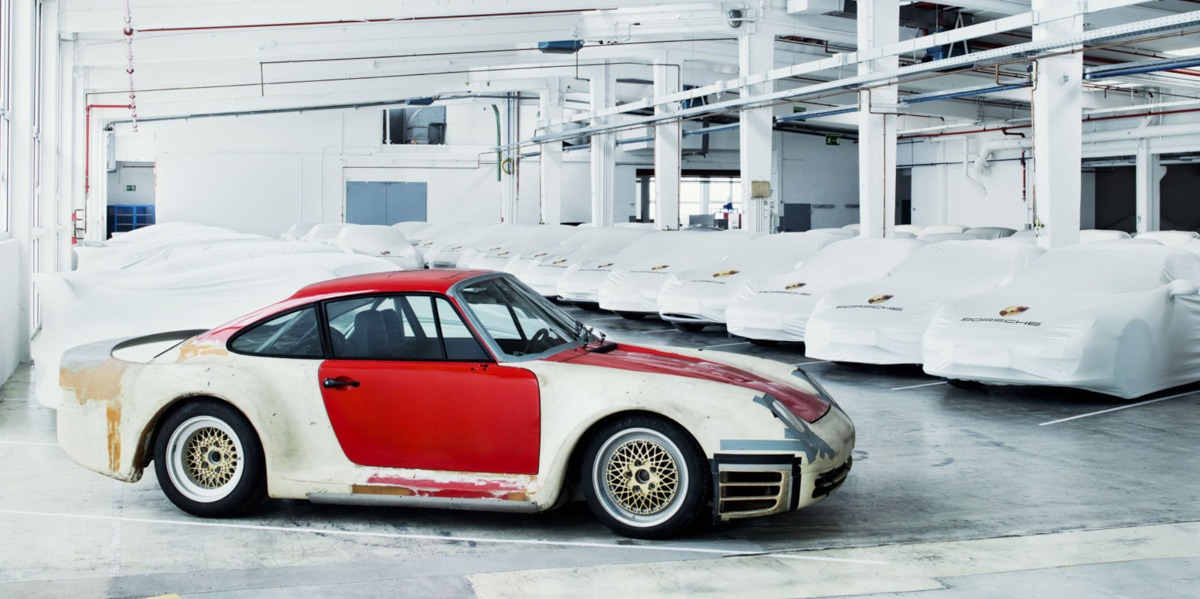 To say that the 959 was the very best car Porsche could make in the late 1980s is no exaggeration. In fact, it wouldn’t even be a stretch to call it the most technologically advanced car of its time. True, the 959 was based on the bones of the then-aging 911 and still had an air-cooled flat-six bolted behind the rear axle, but it was also home to a number of technological firsts—a real watershed moment for the company from Stuttgart.
And yet, as I recently learned, despite the car’s importance, Porsche actively tried to avoid building the 959 when production of the car began its run in 1987. Not only that, but as I also discovered, that isn’t even the most intriguing part of the car’s story, which apparently involves a mysterious collector from Macau and a brief resumption of production in 1992 that led to the existence of six 959s floating anonymously around the car world. Let me explain.
First off, it’s important to understand just how advanced the 959 was for the time. It had an all-wheel-drive system with driver-selectable torque split, adjustable ride height, hollow-spoke magnesium wheels, tire-pressure monitoring, and a six-speed gearbox. Even though the engine was air-cooled as dictated by Porsche tradition, it used water-cooled cylinder heads and twin turbos operating in sequence. This wasn’t just a regular 911 Turbo engine with some new tech, either: It was largely similar to the motor that powered the 936 and the Le Mans-dominating 956 and 962, though in a more road-friendly state of tune.
To say that the 959 was the very best car Porsche could make in the late 1980s is no exaggeration. In fact, it wouldn’t even be a stretch to call it the most technologically advanced car of its time. True, the 959 was based on the bones of the then-aging 911 and still had an air-cooled flat-six bolted behind the rear axle, but it was also home to a number of technological firsts—a real watershed moment for the company from Stuttgart.
And yet, as I recently learned, despite the car’s importance, Porsche actively tried to avoid building the 959 when production of the car began its run in 1987. Not only that, but as I also discovered, that isn’t even the most intriguing part of the car’s story, which apparently involves a mysterious collector from Macau and a brief resumption of production in 1992 that led to the existence of six 959s floating anonymously around the car world. Let me explain.
First off, it’s important to understand just how advanced the 959 was for the time. It had an all-wheel-drive system with driver-selectable torque split, adjustable ride height, hollow-spoke magnesium wheels, tire-pressure monitoring, and a six-speed gearbox. Even though the engine was air-cooled as dictated by Porsche tradition, it used water-cooled cylinder heads and twin turbos operating in sequence. This wasn’t just a regular 911 Turbo engine with some new tech, either: It was largely similar to the motor that powered the 936 and the Le Mans-dominating 956 and 962, though in a more road-friendly state of tune.
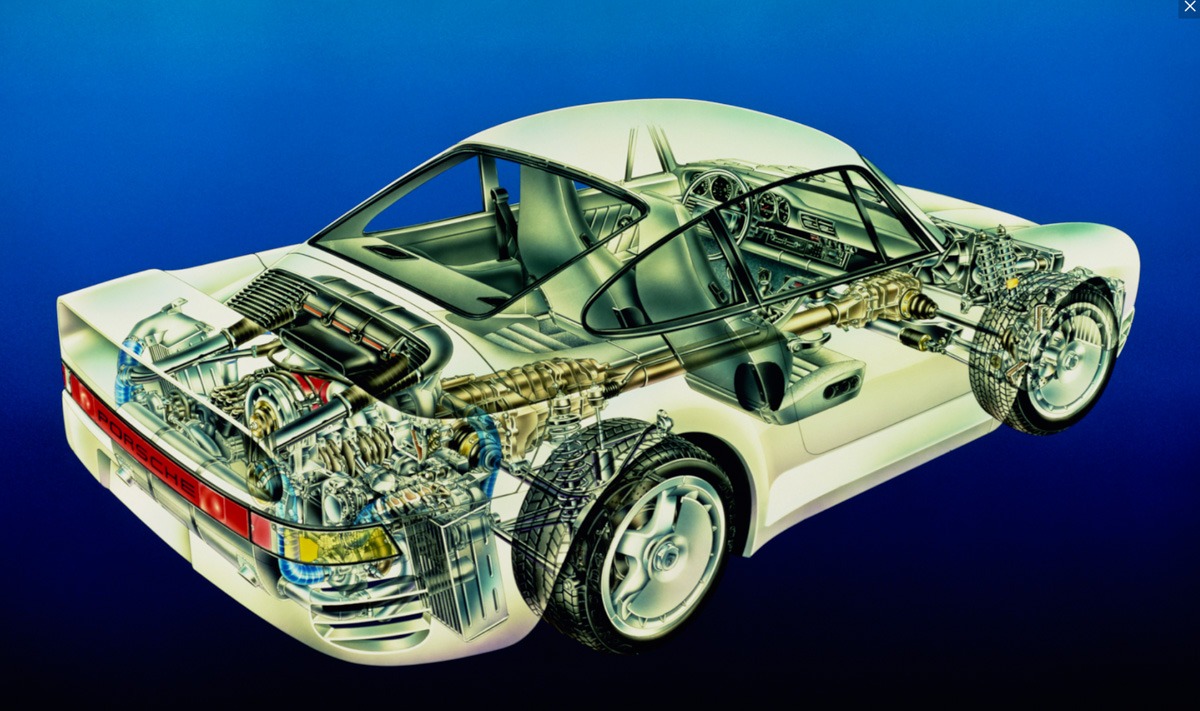 “There is no doubt that Porsche has produced the fastest and technically most advanced car yet offered for road use,” wrote Paul Frère and Dennis Simanaitis in their July 1986 review of the 959 for Road & Track. It also set the tone for Porsche road cars to come, which have grown increasingly innovative in the 30 years since we first drove the 959.
This level of technical achievement on the 959 was huge for Porsche, a small, independent company back then—not the juggernaut it is today. But to make such an expensive car was also a major financial drain for the company, which is why Porsche stopped production early in 1988. While this is all fairly common knowledge for die-hard Porsche fans, here’s something that’s not: Apparently Porsche had enough extra parts left over after the car’s run that it was able to re-start 959 production in 1992 to build a limited number of examples.
I first stumbled on this fact while doing research on Wikipedia for a different story. According to the page, Porsche had made a total of eight 959s in 1992—four red, four silver. I was skeptical. I’d like to think I know a lot about old Porsches, but I’d never heard anything like this before, and further searching didn’t turn up any additional information. So I dug deeper.
“There is no doubt that Porsche has produced the fastest and technically most advanced car yet offered for road use,” wrote Paul Frère and Dennis Simanaitis in their July 1986 review of the 959 for Road & Track. It also set the tone for Porsche road cars to come, which have grown increasingly innovative in the 30 years since we first drove the 959.
This level of technical achievement on the 959 was huge for Porsche, a small, independent company back then—not the juggernaut it is today. But to make such an expensive car was also a major financial drain for the company, which is why Porsche stopped production early in 1988. While this is all fairly common knowledge for die-hard Porsche fans, here’s something that’s not: Apparently Porsche had enough extra parts left over after the car’s run that it was able to re-start 959 production in 1992 to build a limited number of examples.
I first stumbled on this fact while doing research on Wikipedia for a different story. According to the page, Porsche had made a total of eight 959s in 1992—four red, four silver. I was skeptical. I’d like to think I know a lot about old Porsches, but I’d never heard anything like this before, and further searching didn’t turn up any additional information. So I dug deeper.
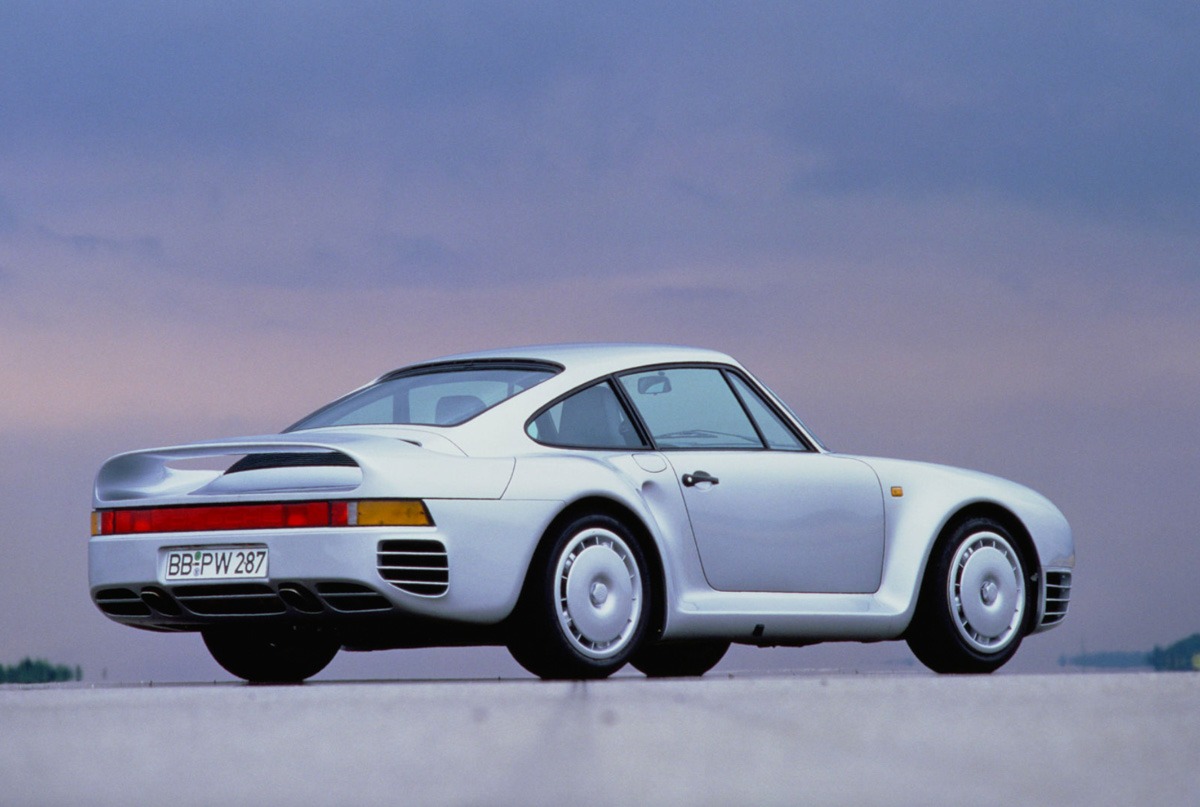 After confirming with Porsche that these cars do exist, I phoned 959 expert Bruce Canepa. Canepa’s imported, owned, sold, and modified more 959s than any of us will probably ever see in our lives (ask him about his 750-hp 959s). If anybody knew about these cars, it would be him. He didn’t disappoint. According to Canepa there are thought to be six of the 1992 959s, and the story behind them is totally fascinating.
“There is no doubt that Porsche has produced the fastest and technically most advanced car yet offered for road use,” wrote Paul Frère and Dennis Simanaitis in their July 1986 review of the 959 for Road & Track. It also set the tone for Porsche road cars to come, which have grown increasingly innovative in the 30 years since we first drove the 959.
This level of technical achievement on the 959 was huge for Porsche, a small, independent company back then—not the juggernaut it is today. But to make such an expensive car was also a major financial drain for the company, which is why Porsche stopped production early in 1988. While this is all fairly common knowledge for die-hard Porsche fans, here’s something that’s not: Apparently Porsche had enough extra parts left over after the car’s run that it was able to re-start 959 production in 1992 to build a limited number of examples.
I first stumbled on this fact while doing research on Wikipedia for a different story. According to the page, Porsche had made a total of eight 959s in 1992—four red, four silver. I was skeptical. I’d like to think I know a lot about old Porsches, but I’d never heard anything like this before, and further searching didn’t turn up any additional information. So I dug deeper.
That would ostensibly make for six 959s built in 1992, though it is possible the 959 Komforts were built in non-sequential order. This is why Canepa remains fairly certain only six were built in 1992, but it’s virtually impossible to be absolutely sure.
Dave Engleman, Porsche Cars North America’s in-house historian, agrees with Canepa’s assessment and says that Porsche has very few records on the 1992 959s. “My info is the same as Bruce’s,” Engleman says.”I haven’t seen anything here internally or externally that differs.”
According to Canepa, the 1992 959s are really no different than the original cars. “[Porsche] treated them as ’88 cars,” he says. “Those were existing tubs, existing chassis. They didn’t come back and say these were ’92 cars, they just were what they were.”
“I’ve had [those cars] here. We didn’t find any differences in the cars at all. None.”
After confirming with Porsche that these cars do exist, I phoned 959 expert Bruce Canepa. Canepa’s imported, owned, sold, and modified more 959s than any of us will probably ever see in our lives (ask him about his 750-hp 959s). If anybody knew about these cars, it would be him. He didn’t disappoint. According to Canepa there are thought to be six of the 1992 959s, and the story behind them is totally fascinating.
“There is no doubt that Porsche has produced the fastest and technically most advanced car yet offered for road use,” wrote Paul Frère and Dennis Simanaitis in their July 1986 review of the 959 for Road & Track. It also set the tone for Porsche road cars to come, which have grown increasingly innovative in the 30 years since we first drove the 959.
This level of technical achievement on the 959 was huge for Porsche, a small, independent company back then—not the juggernaut it is today. But to make such an expensive car was also a major financial drain for the company, which is why Porsche stopped production early in 1988. While this is all fairly common knowledge for die-hard Porsche fans, here’s something that’s not: Apparently Porsche had enough extra parts left over after the car’s run that it was able to re-start 959 production in 1992 to build a limited number of examples.
I first stumbled on this fact while doing research on Wikipedia for a different story. According to the page, Porsche had made a total of eight 959s in 1992—four red, four silver. I was skeptical. I’d like to think I know a lot about old Porsches, but I’d never heard anything like this before, and further searching didn’t turn up any additional information. So I dug deeper.
That would ostensibly make for six 959s built in 1992, though it is possible the 959 Komforts were built in non-sequential order. This is why Canepa remains fairly certain only six were built in 1992, but it’s virtually impossible to be absolutely sure.
Dave Engleman, Porsche Cars North America’s in-house historian, agrees with Canepa’s assessment and says that Porsche has very few records on the 1992 959s. “My info is the same as Bruce’s,” Engleman says.”I haven’t seen anything here internally or externally that differs.”
According to Canepa, the 1992 959s are really no different than the original cars. “[Porsche] treated them as ’88 cars,” he says. “Those were existing tubs, existing chassis. They didn’t come back and say these were ’92 cars, they just were what they were.”
“I’ve had [those cars] here. We didn’t find any differences in the cars at all. None.”
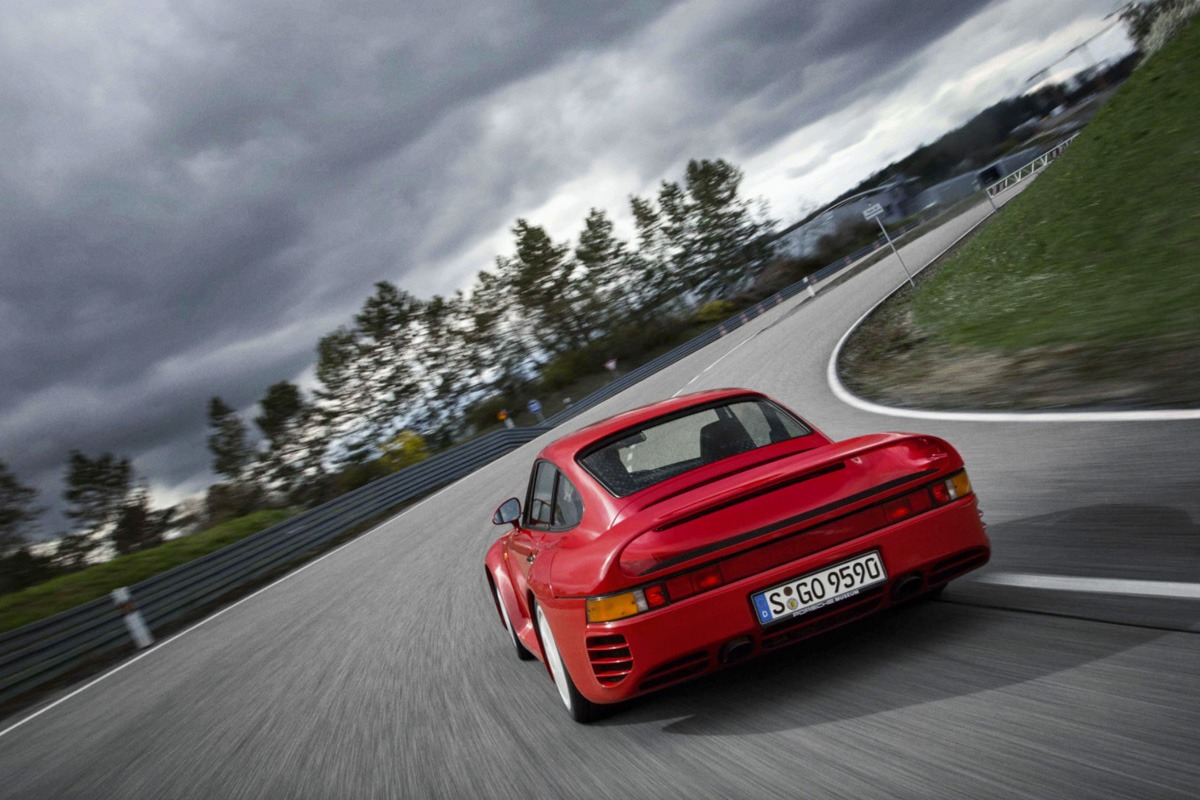 Because no one could tell the new cars and old cars apart—along with the fact that very few people knew these cars existed at all—the 1992 959s aren’t any more valuable than the original run cars. Porsche has never even publicized the fact that they were built.
In my multiple conversations with Canepa, he was also able to shed more light on the first run of vehicles and why the company had to end production early in the first place.
Porsche’s finances were robust in 1984 when the 959 project was approved, but by 1986, the company was in trouble. According to Karl Ludvigsen’s Excellence Was Expected, Porsche accepted 250 orders for 959s with deposits costing $22,730. Unfortunately for Porsche, the total cost of the car was vastly higher than its initial estimate.
“Porsche calculated what they thought it was gonna cost to build the car, entered it in the contracts to sell the car based on that, and then when they started building the cars realized that their production cost was higher than what they were selling the cars for,” Canepa says. “They were already tied to the contract, so they couldn’t go back and say, ‘We’re changing your contract price.'”
Because no one could tell the new cars and old cars apart—along with the fact that very few people knew these cars existed at all—the 1992 959s aren’t any more valuable than the original run cars. Porsche has never even publicized the fact that they were built.
In my multiple conversations with Canepa, he was also able to shed more light on the first run of vehicles and why the company had to end production early in the first place.
Porsche’s finances were robust in 1984 when the 959 project was approved, but by 1986, the company was in trouble. According to Karl Ludvigsen’s Excellence Was Expected, Porsche accepted 250 orders for 959s with deposits costing $22,730. Unfortunately for Porsche, the total cost of the car was vastly higher than its initial estimate.
“Porsche calculated what they thought it was gonna cost to build the car, entered it in the contracts to sell the car based on that, and then when they started building the cars realized that their production cost was higher than what they were selling the cars for,” Canepa says. “They were already tied to the contract, so they couldn’t go back and say, ‘We’re changing your contract price.'”
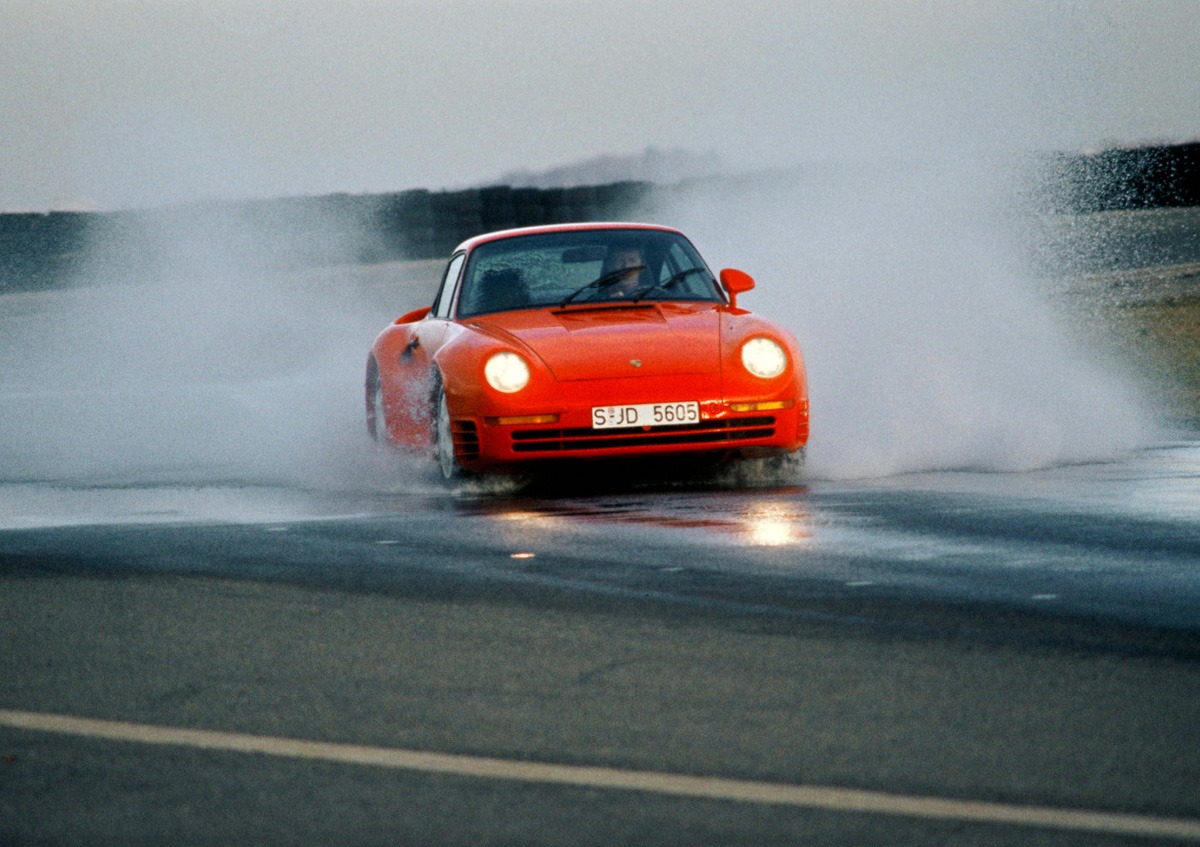 Canepa says the cost for a Komfort-spec 959 was about $300,000, but according to Ludvingsen’s Excellence Was Expected, each car cost Porsche around $720,000 to build. The total cost of the 959 project was said to be around $204 million. With losses like that, you start to see why Porsche wanted to give up building its ultimate technological statement. In the U.S., Porsche didn’t even attempt to get the 959s certified, just so the company could cancel its contracts.
“[Porsche] honored the contract, but what they basically were hoping for at some point was [that] if these cars don’t certify for the U.S. in terms of crash standards and emissions, in the contract it allowed for Porsche to cancel the contract and refund your deposit,” Canepa says. Canepa thinks the cost of federalizing the 959 was so high that it could have taken the company down, so all U.S. contracts were canceled.
That’s essentially how Porsche ended up with enough leftover tubs and parts to build a handful of additional 959s. Canepa says that the fact that the company had these parts wasn’t a “huge secret,” and Porsche really only built the 1992 cars because the collector in Macau and his friend paid almost double the original price. It was simply a matter of good business.
If the late-1980s were bad for Porsche, the early-1990s were catastrophic: Porsche sales fell to just 14,000 cars worldwide in 1993–for context, it sold over 200,000 cars in 2015–and the company-saving Boxster and 996 were still a few years away. Porsche’s motivation for restarting 959 production in 1992 becomes obvious given these circumstances.
So, where are the 1992 959s now? All in the hands of private collectors, according to Canepa. Customers who bought some of these cars from Canepa declined to be interviewed for this story, and the original purchaser, our mysterious gentleman from Macau, wishes to remain private. But Canepa says the man keeps his 959s in the U.S. and doesn’t drive them, so they could be in brand-new condition. It’s possible he hasn’t even seen these cars.
This might be just an odd footnote in Porsche’s long history, but it’s a fascinating one. You often hear about the hard work that gets poured into making a brilliant car like the 959, but you rarely hear about the messy politics and economics behind the scenes. Now knowing this new information, we should just be thankful we got a 959 at all.
Words by Chris Perkins. Pictures provided by Porsche A.G.
Canepa says the cost for a Komfort-spec 959 was about $300,000, but according to Ludvingsen’s Excellence Was Expected, each car cost Porsche around $720,000 to build. The total cost of the 959 project was said to be around $204 million. With losses like that, you start to see why Porsche wanted to give up building its ultimate technological statement. In the U.S., Porsche didn’t even attempt to get the 959s certified, just so the company could cancel its contracts.
“[Porsche] honored the contract, but what they basically were hoping for at some point was [that] if these cars don’t certify for the U.S. in terms of crash standards and emissions, in the contract it allowed for Porsche to cancel the contract and refund your deposit,” Canepa says. Canepa thinks the cost of federalizing the 959 was so high that it could have taken the company down, so all U.S. contracts were canceled.
That’s essentially how Porsche ended up with enough leftover tubs and parts to build a handful of additional 959s. Canepa says that the fact that the company had these parts wasn’t a “huge secret,” and Porsche really only built the 1992 cars because the collector in Macau and his friend paid almost double the original price. It was simply a matter of good business.
If the late-1980s were bad for Porsche, the early-1990s were catastrophic: Porsche sales fell to just 14,000 cars worldwide in 1993–for context, it sold over 200,000 cars in 2015–and the company-saving Boxster and 996 were still a few years away. Porsche’s motivation for restarting 959 production in 1992 becomes obvious given these circumstances.
So, where are the 1992 959s now? All in the hands of private collectors, according to Canepa. Customers who bought some of these cars from Canepa declined to be interviewed for this story, and the original purchaser, our mysterious gentleman from Macau, wishes to remain private. But Canepa says the man keeps his 959s in the U.S. and doesn’t drive them, so they could be in brand-new condition. It’s possible he hasn’t even seen these cars.
This might be just an odd footnote in Porsche’s long history, but it’s a fascinating one. You often hear about the hard work that gets poured into making a brilliant car like the 959, but you rarely hear about the messy politics and economics behind the scenes. Now knowing this new information, we should just be thankful we got a 959 at all.
Words by Chris Perkins. Pictures provided by Porsche A.G. LATEST POST
- Canepa Shop Walk – Week of March 7th, 2025 March 7, 2025
- Canepa Shop Walk – Week of February 28th, 2025 February 28, 2025
- Canepa Shop Walk – Week of February 21st, 2025 February 21, 2025
- New Canepa Showroom! February 19, 2025
- Canepa Shop Walk – Week of February 7th, 2025 February 7, 2025
